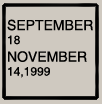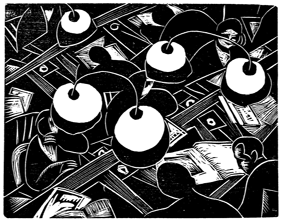
 To commemorate the 100th anniversary of Francisco Bores’ birth (Madrid 1898 - Paris 1972), the Residencia de Estudiantes organized the exhibition “Francisco Bores, el ultraísmo y el ambiente literario madrileño 1921-1925.” The aim of this exhibition was to highlight the important relationships between the artist and Madrid’s avant-garde figures in the 1920s, and to explore his formative years, which are essential in order to understand his future development.
To commemorate the 100th anniversary of Francisco Bores’ birth (Madrid 1898 - Paris 1972), the Residencia de Estudiantes organized the exhibition “Francisco Bores, el ultraísmo y el ambiente literario madrileño 1921-1925.” The aim of this exhibition was to highlight the important relationships between the artist and Madrid’s avant-garde figures in the 1920s, and to explore his formative years, which are essential in order to understand his future development.
The Museo Nacional Centro de Arte Reina Sofía also held a retrospective exhibition of Bores’ works, so that both shows complemented each other, offering a comprehensive picture of the artist's life and professional career.
The exhibition at the Residencia de Estudiantes presented a series of pen and ink drawings on paper, mostly portraits of poets of the Generation of ’27 that Bores knew in his youth; in some cases, those are the only remaining images of the sitter. There were also original illustrations, engraved plates, and documents related to the painter, as well as books, journals and letters. The drawings come from the Bores' family collection; and most of them had never before been shown in public.

Bores' artistic life began in Madrid, where he frequented the tertulias held in the Gijón and Pombo coffee houses and met with members of the ultraísta movement. He strengthened his friendship with artists, writers and thinkers; many of them connected with the Residencia de Estudiantes, such as Ortega y Gasset, Gerardo Diego, Guillermo de la Torre, Federico García Lorca, Salvador Dalí, José Bergamín, Manuel de Falla, Ramón Gómez de la Serna, and Juan Ramón Jiménez. The friendship among artists and poets of the Generation of '27 - i.e., between Lorca and Bores - came from a shared passion for poetry and the visual arts, disciplines that they considered inseparable. That notion explains Bores’ numerous illustrations for journals such as Alfar andTobogán, and his participation in the homage to Góngora which brought together the Generation of ‘27 and whose proceedings were published in the journal Litoral. In 1929, Bores’ works were displayed in the exhibition of paintings and sculptures by Spanish artists living in Paris, organized by the Sociedad de Cursos y Conferencias of the Residencia de Estudiantes in Madrid Botanical Garden.
The catalog, published by the Residencia de Estudiantes, includes essays by Eugenio Carmona, curator of the exhibition, Javier Tusell, and Juan Manuel Bonet that highlight the significance of Bores and the works displayed in the exhibition.